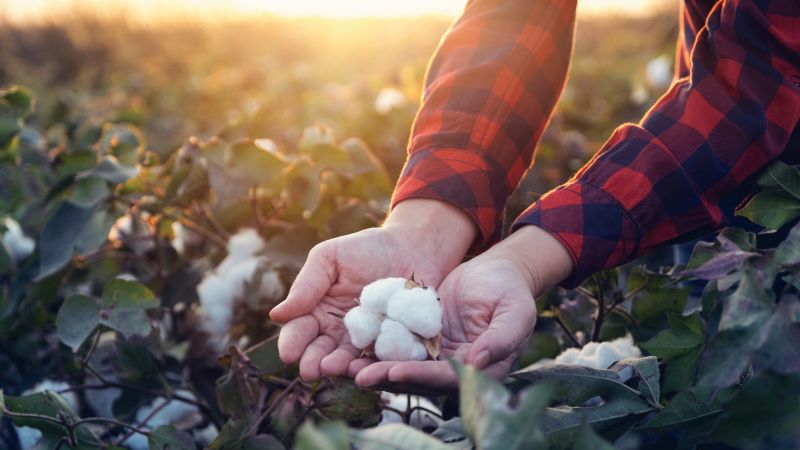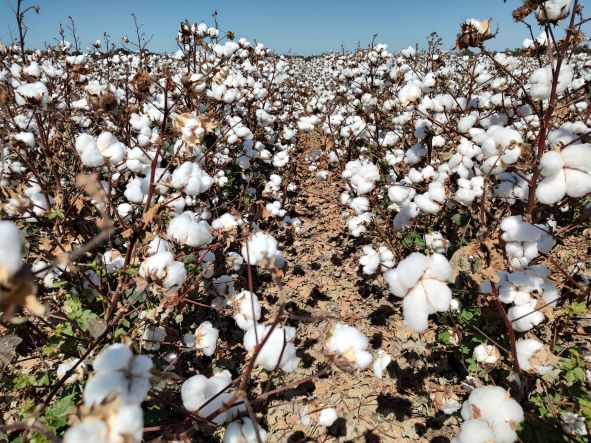Shifting Focus from Market Share to Technology
Over the past three years, an increasing flow of financial capital has targeted the bulk commodities market. As an important agricultural product, cotton faced pricing pressures from increases in market liquidity.
In 2008, China’s textile exports were hindered by the global financial crisis. Domestic cotton prices dropped to $1,584 per tonne. However, by 2010, the price dramatically climbed above $4,751 per tonne. In 2011, the Chinese government endeavored to buy cotton for reserves to prevent a big drop in price, but the price has still dropped to $3,009 per tonne. Such large fluctuations in cotton prices are historically rare.
Did the Chinese cotton or textile industries go wrong? My belief is that neither was responsible and that the entire supply and demand environment in China did not greatly change. The cotton supply still could not keep up with consumption levels. The key factor in the market fluctuations was monetary policy.
Confronted with a complicated and volatile economic situation, governments around the world chose to implement macroeconomic monetary policy more frequently. These policies attracted heavy speculation from investors in bulk agricultural commodities, including cotton. As a result, prices were not only determined by the market demand, but also were manipulated by financial speculation.
The extreme price fluctuations created a more complex trading environment. The government of some cotton-producing countries focused on potential short-term benefits, directly intervened in the cotton trade and shifted the market balance in their favor. Some merchants ignored the sanctity of contracts and chose to default on previous agreements as prices changed, which led to higher potential trade risks.
CCA, similar to other cotton organizations, hopes to reshape the credit systems within the market. CCA believes that cooperation is even more important during times of great stress in the marketplace.
At the same time, we hope that all governments will take a long-term view on trade policy to avoid market distortions in global agricultural trade.
Over the past 10 years, the Chinese cotton industry has successfully opened its market and become more involved in global trade. A diversified market structure was formed and a market-based pricing system was created.
Gaining Strength in Textiles
Since China became a World Trade Organization member, the textile industry has expanded its production strength. Over the past decade, driven by domestic and global consumption needs, the industry has grown to 120 million spindles and 2.32 million rotors. In 2010, China’s yarn production reached 27.17 million tons, 3.1 times the amount of yarn production in 2000. Cloth production reached 80 billion meters, almost doubling production in 2000. The average annual increase in yarn production reached 15.2%. The consumption of cotton grew from 4.6 million tons in 2001 to 10 million tons in 2010.
While cotton textile production developed quickly in China, the domestic cotton production was not stable enough to keep up with demand. To meet the gap, 30% of China’s cotton consumption relies on imports. In the coming five years, according to forecasts from the China Cotton Textile Association, the China textile industry is still expected to grow through both exports and domestic sales despite major adjustments in the global and Chinese economies. A 5% average annual increase in yarn production, a 7.5% average annual increase in cotton textile exports, and a 10% average annual increase in apparel exports are expected.
At the same time, China is losing its advantages in textile production: labor costs, raw materials, land, energy and financing. The industry also faces external pressures from RMB appreciation and rising trade protectionism. Profit margins have decreased further, with profit margins averaging about 4% from 2005 through 2010. Even in 2010, which witnessed the highest historical record for profits, 60% of all cotton textile enterprises maintained an average profit margin of only 1.15%.
Challenges Are Global in Nature
As we enter 2012, there are serious challenges to future global economic growth – the sovereign debt crisis in Europe and the United States, a turbulent global financial market, growing unemployment in developed countries, high inflation in emerging economies, and an inability of countries to find new opportunities for economic growth. The question remains: Will this economic downturn extend over a long period of time? Under these conditions, the Chinese cotton textile industry must work out its own way toward sustainable development.
Of first importance is establishing long-term, stable policies.
As a large cotton-consuming country, China has to guarantee constant growth in cotton production that supplies at least two-thirds of its cotton consumption needs. Cotton farmers require reliable policy support to counteract risks from natural disasters and market fluctuations.
With rising labor costs, the mechanization of cotton production is the solution for the future. To improve the utilization of machinery, China needs to conduct more research on related fields such as new varieties, planting technologies and inspection systems.
The textile industry also needs policies that encourage industry creativity and upgrades. Low-cost expansion and operations only leads to vicious competition that wastes resources and makes the industry less competitive in the global market. The industry has to focus more on value-added and technological advancements.
Since the financial crisis in 2008, China’s textile industry had to change its focus to the domestic market, which was flourishing at the time and brought good opportunities for growth within the industry.
However, an unhealthy business atmosphere caused worry, with issues like lack of financing, fleeing of irresponsible enterprise managers, and speculative endeavors. A substantial economy needs a positive monetary and political environment to support enterprises in brand-building and market expansion. We are pleased to see that these issues have attracted the Chinese government’s attention. There have been slight shifts in monetary policies and increased efforts to benefit small and medium-sized enterprises. At this stage in China’s development, the textile industry still plays a very important role in the health of the country’s labor force.
Secondly, it is urgently important that China’s cotton textile industry innovate its development model to meet the needs of all sectors. The cotton industry affects 40 million households and over 20 million textile workers. All of the sectors that include farmers, mills and merchants have their own individual needs that require consideration.
In recent years, CCA has delivered more than 10 reports to the government related to every sector in the business cycle. It is impossible to promote the importance of the business by only focusing on a single part. China’s cotton industry undertook the process of marketization since joining the WTO 10 years ago. The industry’s future goals will be to improve its competitive and sustainable capabilities.
To continue competing in the global market, Chinese industry must transfer its focus from market share to technology. China, for decades considered the “world’s factory,” is confronting challenges never seen before. The old economic model, supported by cheap resources and low labor costs, will need to change. The core question for China’s cotton industry is how to raise its competitiveness in order to improve the quality of its products and build better brands over the next 10 years. Quality, regulation, credit, branding, competitive ability and sustainability are all keys to the future.
Branding is an important part of a sustainable business practice. In 2010, CCA started to promote the brand “COTTON CHINA.”
This non-profit brand represents high quality, pure cotton and environmental friendliness to encourage cotton consumption, improve the quality of cotton textile products, and benefit consumers. It is a cooperative project supported by the government and coordinated by CCA. It involves all sectors within the industry and benefits the public.
Over the past two years, CCA hosted six events under the theme, “COTTON CHINA – Bringing you a wonderful life.” The activities attracted valuable attention from society, media and consumers. Through its efforts, CCA would like to raise cotton consumption, increase awareness and increase the use of qualified Chinese cotton in textile production. CCA will help the textile industry improve quality standards and its access to credit, while benefiting every stakeholder in the production cycle, including cotton farmers, enterprises, consumers, and even the Earth itself.









